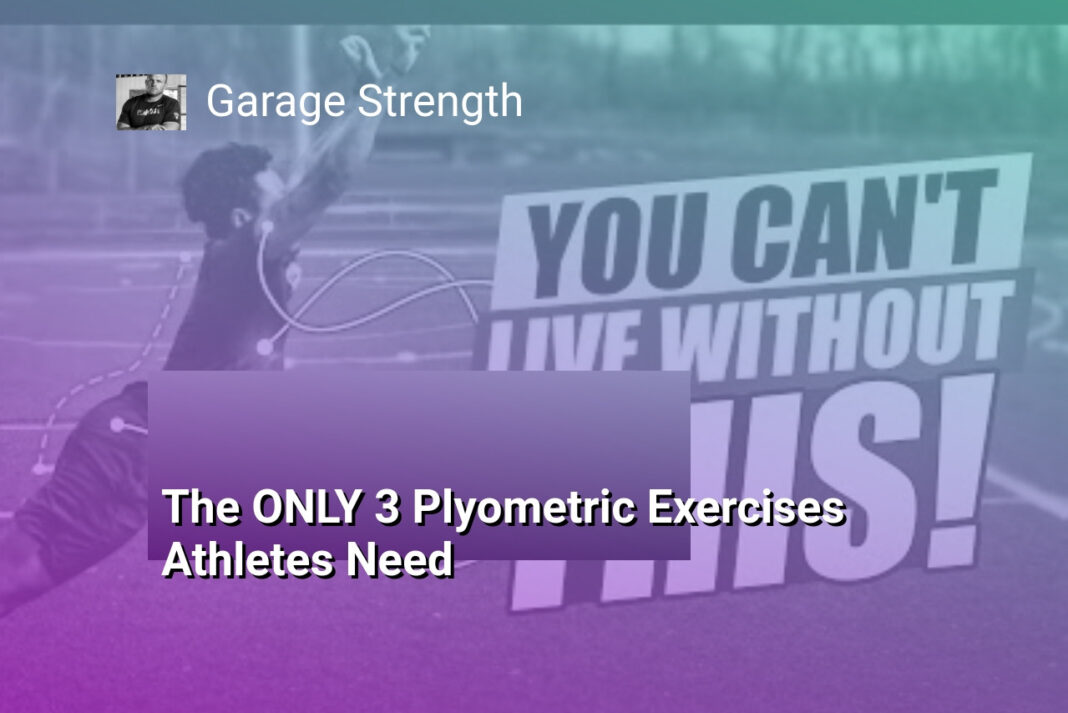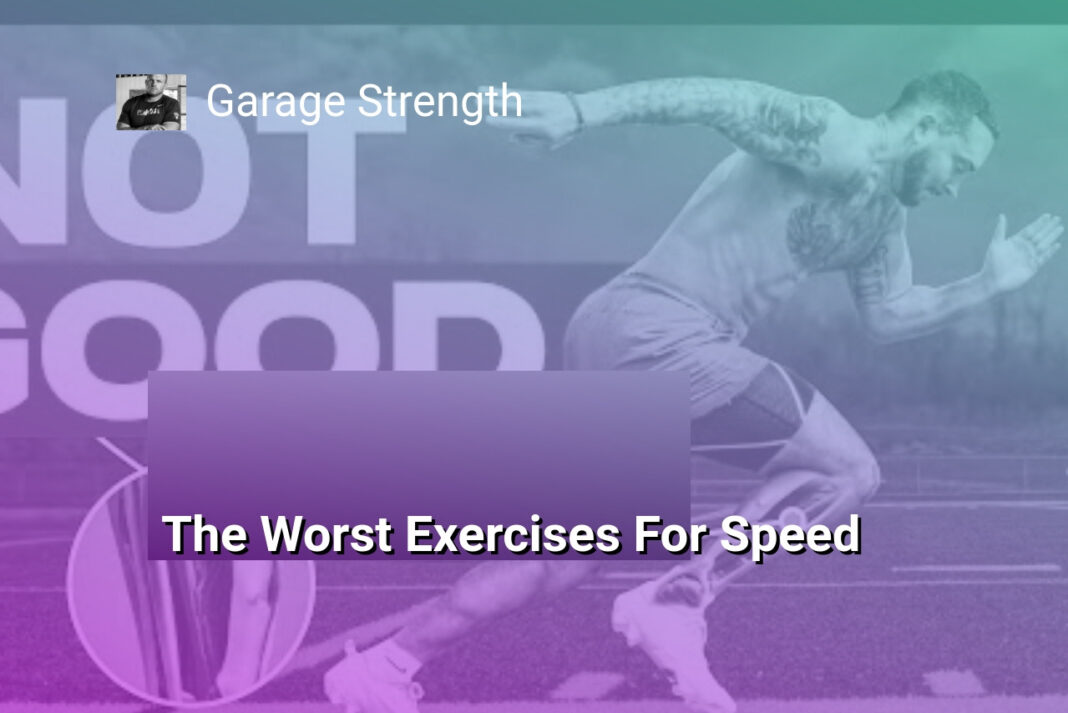The Bottom Line:
Here is a summary of the text in the requested format:
- The three essential plyometric exercises every athlete needs are the broad jump, single-leg pogo hop, and depth jump.
- The broad jump is a foundational movement that can be done with variations like repeated jumps to work on technique and coordination.
- The single-leg pogo hop develops fast-twitch muscle fibers, coordination, and reactive ability, and can be progressed with the use of hurdles or other equipment.
- The depth jump teaches athletes to absorb and release force effectively, which can transfer to other explosive movements.
- These three exercises form a comprehensive plyometric program that can be tailored to athletes of all levels, without the need for extensive equipment or complex routines.
The Broad Jump
Mastering the Broad Jump
The broad jump, also known as the standing long jump, is a fundamental plyometric exercise that every athlete should incorporate into their training regimen. This explosive movement not only develops lower-body power but also enhances coordination, balance, and overall athletic performance.
To execute the broad jump properly, start by standing with your feet shoulder-width apart, knees slightly bent, and arms swinging back behind you. Engage your core, and then explosively drive through your heels, swinging your arms forward to propel yourself as far forward as possible. Focus on achieving a powerful, coordinated takeoff, keeping your chest upright and your gaze forward throughout the movement.
Refining Technique
As you become more proficient with the broad jump, pay close attention to the details of your technique. Analyze your counter-movement, arm swing, and body positioning to optimize your jump distance. Experiment with varying the depth of your counter-movement, adjusting the degree of your chest projection, and exploring different arm swing patterns to find the most efficient and effective approach for your individual biomechanics.
Progressing with Repetitions
Once you have the basic broad jump technique down, you can progress the exercise by performing multiple jumps in a row. Set up a series of markers or cones, and challenge yourself to jump from one to the next, focusing on maintaining a consistent, explosive takeoff and a smooth, controlled landing. This variation not only enhances power development but also improves your ability to coordinate and transition between successive plyometric movements.
Incorporating the broad jump into your training routine, whether as a warm-up, a standalone exercise, or as part of a larger plyometric circuit, can have a profound impact on your athletic capabilities. By mastering the fundamental mechanics and progressively challenging yourself, you’ll unlock new levels of explosive power, coordination, and overall athletic prowess.
The Single Leg Pogo Hop
Mastering the Single Leg Pogo Hop
The single leg pogo hop is a powerful plyometric exercise that can help athletes develop explosive power, coordination, and fast-twitch muscle fiber recruitment. This unilateral movement builds a strong foundation for more advanced plyometric exercises and sports-specific movements.
To begin, start with a simple, beginner-friendly version of the pogo hop. Stand on one leg and perform a series of consecutive vertical hops, focusing on a quick, reactive movement. Ensure that the non-working leg is lifted off the ground, with the knee bent and foot tucked behind the body. Maintain an upright torso position and engage the core to stabilize the movement.
As the athlete becomes more comfortable with the basic pogo hop, you can introduce variations to challenge them further. One such variation is to incorporate a knee drive, where the athlete actively lifts the knee of the non-working leg during the hop. This additional movement pattern helps to develop better coordination and power transfer from the hips and core.
Another progression is to increase the speed and intensity of the pogo hops. Encourage the athlete to react quickly, minimizing ground contact time and maximizing the explosive rebound. This can be achieved by using visual cues, such as placing mini hurdles or markers on the ground, and challenging the athlete to clear them with each hop.
To measure progress and ensure proper technique, consider setting up a plyometric measurement system. This could involve using hurdles or markers to track distance, height, and ground contact time. By establishing benchmarks, you can objectively assess the athlete’s improvements and make data-driven adjustments to the training program.
Remember, the single leg pogo hop is a foundational plyometric exercise that lays the groundwork for more complex movements. By mastering the basics and progressively challenging the athlete, you can help them develop the power, coordination, and explosive abilities necessary for success in their sport.
Integrating the Pogo Hop into Your Training
The single leg pogo hop can be seamlessly integrated into a comprehensive athlete training program. Begin by incorporating it into the “athlete-based” training day, where the focus is on developing speed, power, and movement skills.
Start with a warm-up that includes dynamic stretching and mobility exercises to prepare the body for the plyometric demands. Then, introduce the pogo hop, focusing on proper technique and gradually increasing the intensity and volume as the athlete’s abilities progress.
It’s important to note that the pogo hop can also complement your strength training program. Exercises like Romanian deadlifts and hip thrusts can help develop the hip and posterior chain strength necessary for effective pogo hopping. By pairing the plyometric work with targeted strength training, you can create a synergistic effect that enhances the athlete’s overall power and explosiveness.
Additionally, the pogo hop can be used as a warm-up or activation exercise before other high-intensity activities, such as sprinting or jumping. The reactive nature of the movement helps to prime the neuromuscular system and prepare the athlete for the demands of their sport.
Remember, the key to successful integration of the pogo hop is to thoughtfully plan and periodize the training program. Monitor the athlete’s progress, adjust the volume and intensity as needed, and be mindful of recovery to ensure optimal performance and injury prevention.
Mastering the Pogo Hop Technique
Proper technique is essential for maximizing the benefits of the single leg pogo hop and minimizing the risk of injury. Here are some key coaching cues to help athletes master the movement:
1. Foot Positioning: Encourage the athlete to maintain a mid-to-forefoot landing, avoiding excessive heel strike. This helps to create a more efficient, reactive movement.
2. Knee and Hip Flexion: Instruct the athlete to maintain a slight knee and hip bend throughout the movement. This allows for a more effective absorption and generation of force.
3. Torso Alignment: Cue the athlete to keep their chest up and core engaged, maintaining an upright, stable torso position.
4. Arm Swing: Encourage the athlete to actively swing their arms in coordination with the leg movement. This helps to generate additional power and improve overall body coordination.
5. Reactive Rebound: Emphasize the importance of a quick, reactive rebound off the ground. Minimize ground contact time and focus on an explosive, springy movement.
6. Bilateral Symmetry: Ensure that the athlete performs the pogo hop with equal proficiency on both legs. This helps to develop balanced strength and coordination.
By focusing on these technical aspects, you can help your athletes develop the necessary skills to perform the single leg pogo hop with efficiency and power. Regularly assessing technique and providing feedback will be crucial for continued progress and injury prevention.
The Hurdle Hop
Mastering the Hurdle Hop
The Hurdle Hop is a dynamic plyometric exercise that challenges an athlete’s coordination, balance, and explosive power. This exercise is a fantastic progression from the single-leg Pogo Hop, as it introduces an additional element of spatial awareness and agility.
To perform the Hurdle Hop, begin by setting up a series of low-profile hurdles or mini-hurdles, spaced approximately 2.5 to 3 feet apart. Stand facing the first hurdle, and initiate the movement by driving through the ground with one leg, propelling your body upwards and over the hurdle. As you clear the hurdle, quickly switch your lead leg, landing on the opposite foot and immediately driving off the ground to clear the next hurdle.
Maintain a tall, upright posture throughout the movement, with your chest projected forward and your arms actively assisting your momentum. Focus on generating a powerful, explosive takeoff, while also maintaining control and balance during the landing phase. Avoid excessive ground contact time, as the goal is to create a rapid, fluid hopping motion.
As you become more proficient with the Hurdle Hop, you can experiment with various modifications to challenge yourself further. Try increasing the height or spacing of the hurdles, or incorporate lateral or diagonal hopping patterns to enhance your agility and multidirectional power.
Remember, the Hurdle Hop is not just about the physical execution – it’s also about developing the mental focus and coordination required to seamlessly navigate a series of obstacles. By mastering this exercise, you’ll not only improve your athletic performance but also build the confidence and problem-solving skills that are essential for success in any sport.
Measuring Progress and Optimization
One of the key benefits of the Hurdle Hop is its versatility as a measurement tool. By setting up a standardized hurdle course, you can track an athlete’s progress over time, monitoring factors such as ground contact time, jump height, and overall fluidity of movement.
As a coach or athlete, you can use these metrics to identify areas for improvement and refine your training program accordingly. For example, if an athlete struggles with maintaining a consistent rhythm or experiences excessive ground contact time, you can focus on improving their reactive strength and coordination through targeted drills and exercises.
Additionally, the Hurdle Hop can be used as a benchmark to assess an athlete’s readiness for more advanced plyometric training. By setting specific performance goals, you can ensure that your athletes are progressing at a safe and appropriate pace, minimizing the risk of injury while maximizing their athletic development.
Integrating the Hurdle Hop into Your Training
The Hurdle Hop is a versatile exercise that can be seamlessly integrated into a variety of training programs. Whether you’re working with competitive athletes or recreational fitness enthusiasts, this plyometric exercise can be a valuable addition to your training arsenal.
Consider incorporating the Hurdle Hop into your warm-up routine to activate the nervous system and prepare the body for more intense training. Alternatively, you can use it as a primary plyometric exercise within your workout, either as a standalone drill or as part of a circuit or interval-based training session.
Remember to always prioritize proper form and technique, as the Hurdle Hop requires a high degree of coordination and neuromuscular control. Start with a lower number of repetitions and gradually increase the volume and intensity as your athletes become more comfortable with the movement.
By mastering the Hurdle Hop and incorporating it into your training program, you’ll unlock a powerful tool for developing the explosive power, agility, and overall athletic prowess that are essential for success in any sport.





